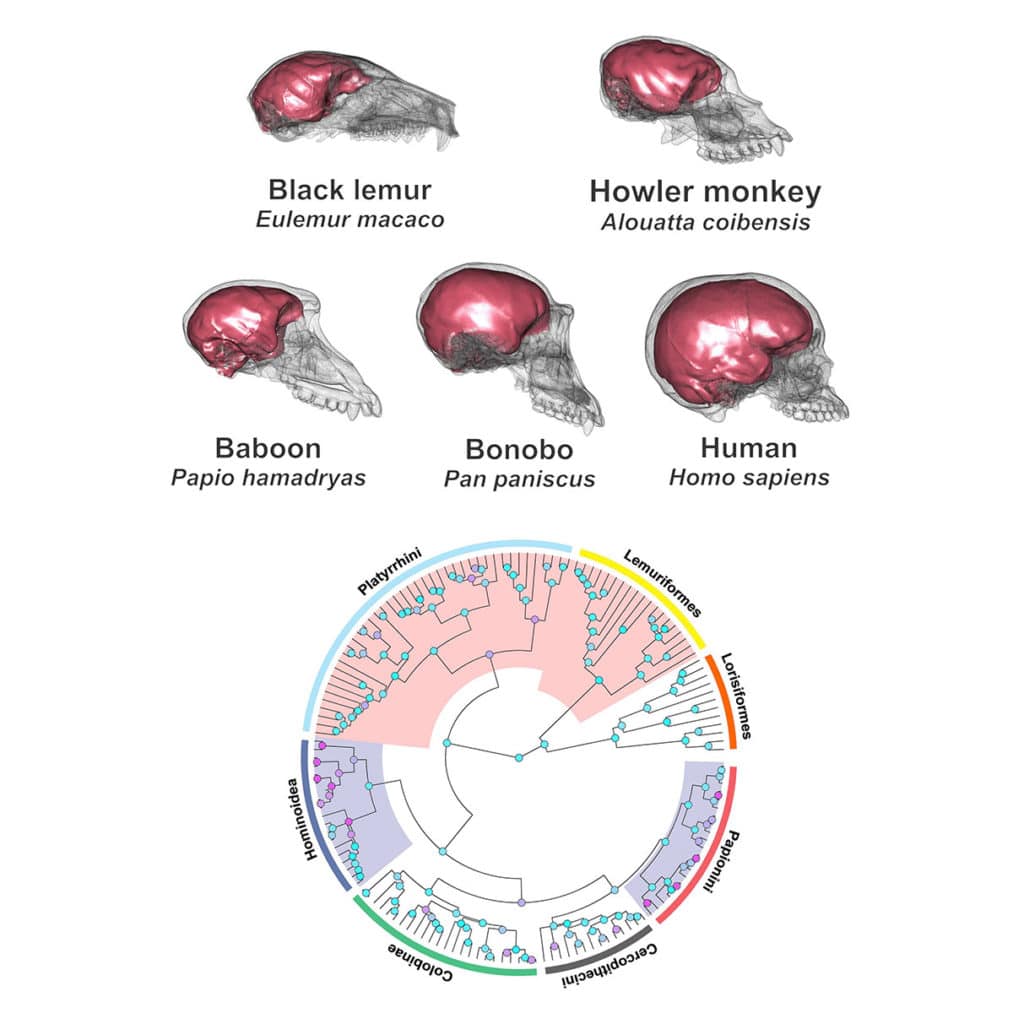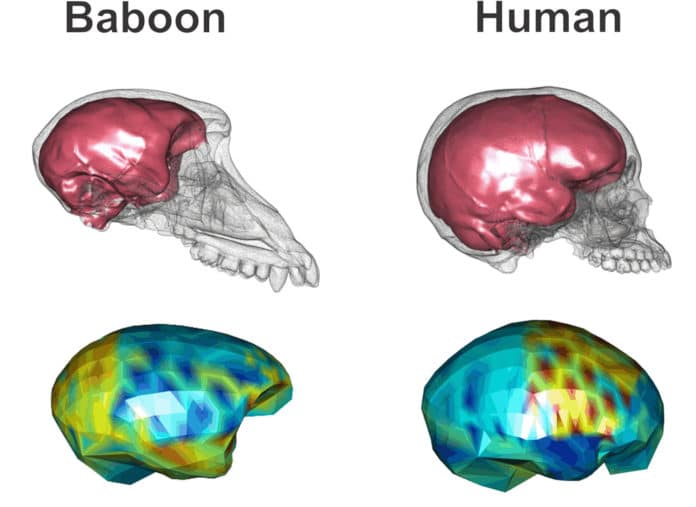Human brains vary considerably in size across adults. While brain size has long been the preferred measured trait for anthropological investigations, the brain isn’t uniform in shape and shows considerable structural variation.
The scientists at the University of New England, in collaboration with Italian and American institutes, were keen to know how humans evolved to have the distinct large, globular shaped brains we have today.
To figure out the answer, scientists conducted a novel large-scale evolutionary analysis. They found that the evolution of higher cognitive capacity is not only due to having a larger brain but also due to the brain having the “right” shape.
For their study, scientists used large samples of 3-D digital reconstructions of primate brains. They conducted 3D shape analysis to estimate the morphological variation between the different primate groups and a novel phylogenetic strategy to reconstruct the main morphological changes that occurred through the primate lineage.
Their findings reveal that the brains of great apes such as chimpanzees and humans as well as papionin monkeys—baboons and macaques—are characterized by fast evolution and larger brain size. These characteristics set them apart from smaller lemurs and New World monkeys, which evolve more slowly.

Lead author Dr. Gabriele Sansalone said, “Humans and, to a minor extent, the great apes display a massive reorganization of the brain areas devoted to complex thinking, articulated language, social behavior and problem-solving such as the frontal lobe and the prefrontal cortex.”
“Our heat maps clearly show the great bulging prefrontal cortex of the human brain, whereas the brains of baboons are characterized by changes in the temporal and occipital regions.”
Journal Reference:
- G. Sansalone et al. Variation in the strength of allometry drives rates of evolution in primate brain shape, Proceedings of the Royal Society B: Biological Sciences (2020). DOI: 10.1098/rspb.2020.0807
